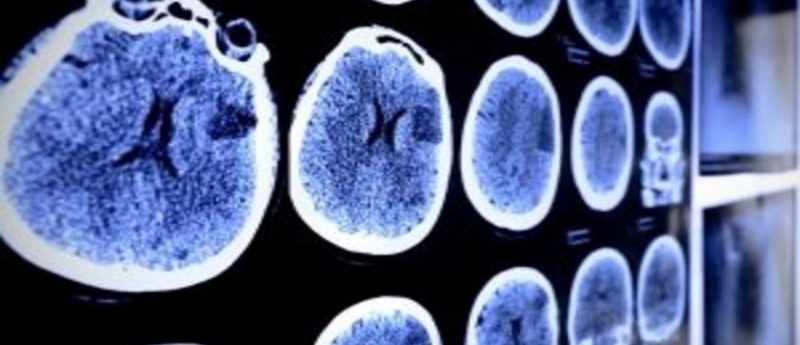2015 neuro-oncology update: practice-changing trials in adult gliomas

The treatment of gliomas, regardless of the World Health Organization (WHO) grade, continues to evolve and recent studies suggest an improvement in patient outcomes as assessed by overall survival as well as an improved understanding of the molecular biology of gliomas. Several large glioma trials have been reported recently and in many instances have changed clinical practice.
Low grade gliomas (LGG), i.e., WHO grade II gliomas, are comprised of three classic histologies; astrocytoma, oligodendroglioma and oligoastrocytoma (an admixture of oligodendroglioma and astrocytoma). In addition, LGG are further characterized as either low risk or high risk wherein high risk is defined as either age of patient >40 years or having undergone an incomplete tumor resection. This later definition is based on the recently reported RTOG 9802 trial, which compared radiotherapy (RT) with RT + PCV (procarbazine, lomustine, and vincristine) chemotherapy [1]. Previously, and based upon two large European studies, high risk was defined as a patient having three of five characters, including age >40 years, tumor >5 cm in diameter, tumor involving midline brain, astrocytic histology or focal neurological deficit preceding any tumor treatment [2].
RTOG 9802 changed practice by demonstrating that in patients defined as having high-risk LGG, the administration of RT + PCV improved both median progression-free survival (PFS) and overall survival (OS) by two fold. RTOG 9802 reported both PFS (4 vs 7.8 years) and OS (7.8 years vs 13.3 years) were significantly improved in the RT + PCV treatment arm. The mean follow-up in this study was 11.9 years and 55% of all enrolled patients had died. Furthermore, as the RTOG data matures as demonstrated by the 10-year OS data, the difference between treatment arms continues to separate, further favoring the combination treatment.
This practice changing study concludes that the majority of patients with LGG benefit from RT + PCV therapy, as only a minority of patients with LGG would be classified as low risk (i.e., having undergone an image-verified complete resection and > 40 years of age at time of diagnosis) and thereby able to defer adjuvant therapy. Not reported in the RTOG trial was a molecular profile of the enrolled tumors – particularly with respect to p53, IDH-1 and ATRX mutations – as well as the presence of the 1p19q codeletion or glioma-CpG island phenotype (g-CIMP). These various molecular genotypes have been demonstrated to be either prognostic or predictive and therefore are increasingly clinically relevant. Nonetheless, the RTOG 9802 high-risk LGG data remarkably recapitulates outcome seen in trials with 1p19q codeleted anaplastic gliomas (see below) suggesting that the differences between these WHO grade gliomas (grade II vs III) is likely best determined by molecular analysis rather than histology. Still unanswered is whether temozolomide (TMZ) may substitute for PCV in the adjuvant treatment of LGG, a similar dilemma seen in the management of anaplastic gliomas.
A large randomized European Organization for Research and Treatment of Cancer (EORTC) Phase III study of symptomatic and progressive LGG (n = 477 patients) compared TMZ (dose-dense schedule of 21 treatment days every 28 days) with radiotherapy (RT; 50.4 Gy total dose); with the prespecified endpoint TMZ was superior [3]. In all patients, regardless of histology or 1p deletion status, TMZ was inferior to RT both with respect to PFS (40 vs. 47 months) and OS (74 months vs not yet reached), recognizing that the data currently is immature.
Practice changing with respect to anaplastic gliomas (AG) or WHO grade III gliomas, was the long-term follow-up from the RTOG 9402 and EORTC 26951 trials. Both trials enrolled newly diagnosed anaplastic oligodendroglial tumors (AOT), a subset of WHO grade III anaplastic gliomas [4,5]. These studies previously reported no difference in OS in patients treated either with RT alone or RT + PCV chemotherapy, regardless of genotype. The presence of the 1p19q codeletion was seen in a third to half of all patients enrolled and in this cohort, PFS was favorably impacted by treatment with RT + PCV, compared with RT only. Both the EORTC and RTOG trials demonstrated a two-fold increase in median OS in patients with 1p19q codeleted AOT treated with RT + PCV compared with RT alone in which an alkylator-based chemotherapy was utilized at recurrence (12–14 years vs 7 years). What is unclear is why survival increases so dramatically with initial RT + PCV versus sequential therapy (RT followed at recurrence by an alkylator-based chemotherapy) and further whether TMZ may be substituted for PCV with similar outcome.
A recently opened randomized Phase III ALLIANCE/RTOG trial, termed CODEL, is designed to demonstrate in patients with 1p19q codeleted AG whether adjuvant TMZ is equivalent to PCV when administered following RT. Additionally, the currently open and accruing EORTC study for newly diagnosed uni- or non-1p19q codeleted AG (CATNON), in whom there was no benefit to RT + PCV in the AOT RTOG and EORTC trials mentioned above, will determine the value of TMZ when added to RT. The CATNON trial is a 4-arm randomized study comparing RT only to RT followed by post-RT TMZ, to RT + TMZ, and to RT + TMZ followed by post-RT TMZ. Furthermore, the significance of the IDH1 and ATRX mutations in uni- or non-deleted AG are being collected prospectively and an analysis will determine how these mutations relate to both survival and response to treatment. A subset analysis of the RTOG AOT mentioned above suggested that benefit to adjuvant chemotherapy was only seen in IDH1 and ATRX mutated nondeleted AG [6].
Similar in design and outcome were the randomized Phase III RTOG 0825 (n = 637 patients) and AVAglio (n = 921 patients) studies that compared standard of care RT+TMZ (SOC) with or without bevacizumab (BEV: Avastin®) in patients with newly diagnosed glioblastoma (GBM; WHO grade IV gliomas)} [7,8]. Both trials failed to show a benefit in median OS (AVAglio: 16.8 vs 16.9 months; RTOG: 16.1 vs 16.6 months) notwithstanding an improvement in median PFS (AVAglio: 6.2 vs 10.6 months; RTOG: 7.3 vs 10.3 months). In part, the failure to demonstrate a survival benefit in the BEV arm represents a cross-over effect wherein 30–40% of patients on the SOC arm were treated with BEV at recurrence. A major point of discussion were the differences in patient-reported outcomes when comparing the RTOG 0825 trial (no benefit seen in the BEV arm with respect to a health-related quality of life [HRQoL] instrument, the MD Anderson symptom inventory or neurocognitive function outcome) to the AVAglio trial (a benefit seen in the BEV arm regarding HRQoL) [6,7]. These differences appeared to be more methodological and likely relate to the manner of analysis.
A post hoc analysis of 349 patients with GBM in the AVAglio trial sought to determine if there was a molecularly defined subgroup identified by nanostring gene expression (transcriptome) analysis that derive benefit from upfront treatment with BEV [8]. Classifying molecular subgroups as proneural (28% overall), mesenchymal (40%) and proliferative (16%) as previously described showed that the proneural group derived benefit in both PFS and OS when treated with BEV as compared with placebo. The AVAglio data require confirmation in an independent data set and may, if confirmed, define a molecularly defined group of newly diagnosed GBM that benefit from upfront BEV.
In a recent presentation, an analysis of the Novocure upfront study for newly diagnosed GBM, EF-14, compared outcome for patients treated with SOC (RT + concomitant and adjuvant TMZ) with or without the Novocure (Optune) device [9]. The results were based on a preliminary evaluation of the initial 315 patients accrued to study (study enrollment at time of the presentation was 692 patients of the 700 specified by protocol). Median PFS was 7.1 months in the Novocure arm and 4 months in the SOC arm (HR 0.76) and median OS was 19.6 (Novocure) vs. 16.6 months (SOC only) [HR 0.76]. Two-year survivorship was 43% in the Novocure arm and 29% in the SOC arm. These early results led to the study conclusion that Novocure is practice changing and should now in conjunction with RT + TMZ represent the new SOC for the treatment of newly diagnosed GBM. Based on this analysis, the sponsor, and the disease and safety management board elected to terminate the study and all patients not on the device were given the opportunity to cross over, thereby prematurely terminating the study despite the protocol enrollment target of 700 patients for which the trial was statistically powered. Not explained was the modest PFS in the SOC arm that was 2–3 months less than seen in other contemporary upfront GBM trials.
In another practice-changing trial in GBM, the German NOA-08 study compared standard dose 60Gy RT with dose dense TMZ in elderly patients [10]. The trial demonstrated similar outcome in both treatment arms, however outcome was dependent upon MGMT promoter methylation status wherein MGMT-methylated tumors had improved outcome when treated with TMZ, whereas unmethylated tumors had improved outcome with radiotherapy [11,12]. The German NOA-08 trial is one of three for elderly patients and of the two published trials (NOA-08 and the Nordic trial), both suggest TMZ only therapy to be as effective when compared with RT [11,12]. The combined Canadian and European elderly GBM trial in progress will compare hypofractionated RT (40Gy in 15 fractions) with or without standard dose TMZ and will determine if any benefit is observed with combination therapy in this large patient population.
The Dutch BELOB trial (n = 153 patients) compared lomustine (CCNU) to BEV to the combination of CCNU + BEV and as such constitutes the first BEV trial in recurrent GBM to compare BEV with a SOC agent i.e., lomustine [13]. Six month PFS favored the combination arm (11% vs 18% vs 41%) as did median OS (8 vs 8 vs 11 months). These results raise the question of whether there is a survival advantage to single agent BEV in recurrent GBM that will be further investigated in the larger randomized Phase III EORTC 26101 trial using similar treatment arms.
Lastly, immune-based therapies are currently the leading novel agents for treating both recurrent and newly diagnosed GBM. Most mature amongst immune-based therapies for gliomas was the report regarding partial results from the ReACT trial, a randomized Phase II study comparing BEV with or without the EGFRviii peptide vaccine, rindopepimut [14]. In >700 patients that were screened, 234 (30%) were positive for expression of the EGFRviii protein and therefore considered for the trial. 72 patients were enrolled in the randomized study and in whom an objective response was seen; 24% in the BEV + rindopepimut arm and 17% in the BEV only arm. Similarly PFS-6 was 27% and 11% and median OS was 12 months and 8.8 months in the BEV + vaccine arm vs the BEV + placebo vaccine arm. These preliminary results suggest rindopepimut may amplify response and increase duration of response in recurrent BEV naïve GBM that expresses the mutant EGFRviii protein to which the peptide vaccine is targeted. A companion randomized Phase III trial (ACT 4) in newly diagnosed GBM has recently completed accrual. This trial compared SOC with or without the peptide vaccine, rindopepimut. Results of this trial may be practice changing as well. A number of additional trials using immune-based therapies are nearing completion and likely will inform as to the utility of immunotherapy in the management of gliomas.
References
- Buckner J, Shaw E, Pugh S, et al. R9802: Phase III study of radiation therapy (RT) with or without procarbazine, CCNU, and vincristine (PCV) in low-grade glioma: Results by histologic type. Neuro Oncol 16:5s, 2014 (suppl;abstr AT-13).
- Pignatti F, van den Bent MJ, Curran D, et al. Prognostic factors for survival in adult patients with cerebral low-grade glioma. J Clin Oncol. 20(8), 2076–2084 (2002).
- Baumert B, Mason W, Ryan G, et al. Temozolomide chemotherapy versus radiotherapy in molecularly characterized (1p los) low grade glioma: A randomized Phase 3 intergroup study by the EORTC/NCIC-CTG/TROG/MRC-CTU (EORTC 22033-26033). J Clin Oncol. 31, 2013 (suppl; abstr 2007).
- Van den Bent MJ, Brandes AA, Taphoorn MJ, et al. Adjuvant procarbazine, lomustine, and vincristine chemotherapy in newly diagnosed anaplastic oligodendroglioma: long-term follow-up of EORTC brain tumor group study 26951. J Clin Oncol. 31(3), 344–350 (2013).
- Cairncross JG, Wang M, Shaw E, et al. Phase III Trial of Chemoradiotherapy for Anaplastic Oligodendroglioma: Long-Term Results of RTOG 9402. J Clin Oncol. 31(3), 337–343 (2013).
- Cairncross JG, Wang M, Jenkins RB, et al. Benefit from procarbazine, lomustine, and vincristine in oligodendroglial tumors is associated with mutation of IDH. J Clin Oncol. 32(8), 783–90 (2014).
- Gilbert MR, Dignam JJ, Armstrong TS, et al. A randomized trial of bevacizumab for newly diagnosed glioblastoma. N Engl J Med. 370(8), 699–708 (2014).
- Chinot OL, Wick W, Mason W, et al. Bevacizumab plus radiotherapy-temozolomide for newly diagnosed glioblastoma. N Engl J Med. 370(8), 709–722 (2014).
- Phillips H, Sandman T, Li C, et al. Corrrelations of molecular subtypes with overall survival (OS) in AVAglio, a randomized, placebo-controlled study of bevacizumab (BEV) plus radiotherapy (RT) and temozolomide (TMZ) for newly diagnosed glioblastoma (GBM). Neuro Oncol 16:5s, 2014 (suppl;abstr BI-22).
- Stupp R. Oral presentation without an abstract. Presented at: 19th Annual Scientific Meeting of the Society for Neuro-Oncology. Miami, FL, USA, 13 November–16 November 2014.
- Wick W, Meisner C, Hentschel B, et al. Prognostic or predictive value of MGMT promoter methylation in gliomas depends on IDH1 mutation. 81(17), 1515–1522 (2013).
- Malmström A, Grønberg BH, Marosi C, et al. Temozolomide versus standard 6-week radiotherapy versus hypofractionated radiotherapy in patients older than 60 years with glioblastoma: the Nordic randomised, phase 3 trial. Lancet Oncol. 13(9), 916–926 (2012).
- Taal W, Oosterkamp HM, Walenkamp AM, et al. Single-agent bevacizumab or lomustine versus a combination of bevacizumab plus lomustine in patients with recurrent glioblastoma (BELOB trial): a randomised controlled phase 2 trial. Lancet Oncol. 15(9), 943–953 (2014).
- Reardon D, Schuster J, Tran D, et al. ReACT: A phase II study of rindopepimut vaccine (CDX-110) plus bevacizumab in relapsed glioblastoma. Neuro Oncol 16:5s, 2014 (suppl;abstr IT-30).



